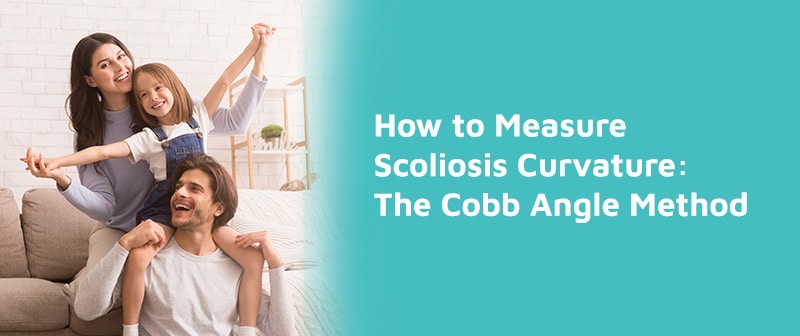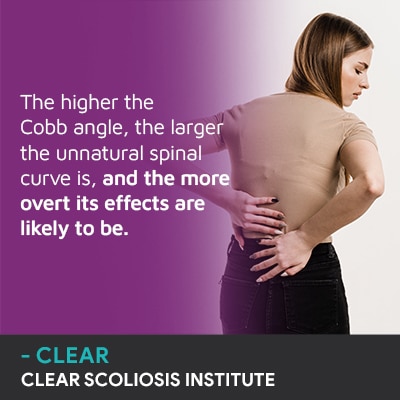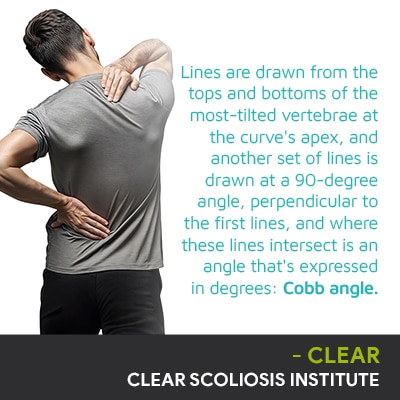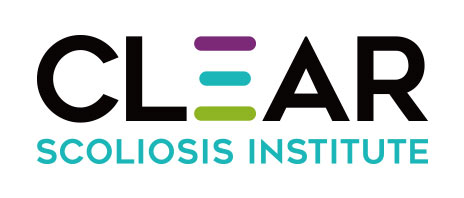
Scoliosis is a complex spinal condition that requires treatment. Measuring the size of a patient's unnatural spinal curvature is based on their Cobb angle measurement. Taken during X-ray, the Cobb angle helps diagnose and assess scoliosis, but the measurement also has limitations.
Scoliosis is the development of an unnatural sideways spinal curvature, and there are different sizes of both healthy and unhealthy spinal curves. When it comes to a scoliotic curve, size and severity are determined by the gold standard in scoliosis assessment: a patient's Cobb angle measurement.
Let's start with the difference between a healthy and an unhealthy spinal curvature.
The spine is naturally curved, and these natural and healthy curves make it function optimally with increased strength and flexibility; it's because of these curves that the spine appears straight from the front and/or back, but has a soft 'S' shape from either side.
The spine has three main sections that include the cervical spine, thoracic spine, and the lumbar spine: the neck, middle/upper back, and the lower back.
Each spinal section has a natural curvature type that can range in size from person to person, and variance within a certain degree is acceptable, but if one or more of a person's spinal curves falls beyond a normal range, problems can occur.
The health of each spinal section and curvature is related to the health of the other sections and their curves, so the loss of one healthy curve doesn't just affect a single spinal section, but is capable of disrupting the entire spine's biomechanics.
A condition like scoliosis is serious because it causes the development of an unhealthy spinal curvature that bends to the side and twists; the rotational component makes scoliosis 3-dimensional.
And just as there are different sizes of healthy spinal curves, there is a wide range of unhealthy curve sizes, and when it comes to scoliosis, curve sizes is determined by a measurement known as Cobb angle.
A patient's Cobb angle measurement is considered the gold standard in the assessment of scoliosis.
Not only does an unnatural sideways-bending spinal curvature need rotation to be considered a true scoliosis, it also has to be of a minimum size: Cobb angle measurement of 10 degrees.
Determining a patient's Cobb angle is important for diagnosing and assessing scoliosis, and condition severity is determined based on the measurement:
Mild scoliosis is diagnosed at 10 - 25 degrees
Moderate scoliosis involves Cobb angle measurements of between 25 and 40 degrees
Severe scoliosis involves cases of 40+ degrees

Understanding scoliosis means understanding its progressive nature, and this means that its effects can change over time with growth: progression is triggered by growth.
As scoliosis progression occurs, its effects are going to become more pronounced, and the condition is also becoming more difficult to treat; this is the benefit to a proactive treatment approach that's started immediately following a diagnosis.
Treatment decisions are based on a number of factors, including a patient's age and Cobb angle measurement, so its accuracy is important.
Before getting to some potential limitations of the Cobb angle measurement, let's explore how it's determined.
The Cobb angle is determined during X-ray and involves measuring how unnaturally tilted the vertebrae are in each of the spinal sections and curves.
Lines are drawn from the tops and bottoms of the most-tilted vertebrae at the curve's apex, and another set of lines is drawn at a 90-degree angle, perpendicular to the first lines, and where these lines intersect is an angle that's expressed in degrees: Cobb angle.
Condition severity is one of the main factors that treatment plans are designed around, hence the importance of getting an accurate measurement.
While a patient's Cobb angle tells us a lot, there are some limitations to be aware of.
The complexity of scoliosis doesn't just necessitate the complete customization of effective treatment plans, it also requires the expertise of a scoliosis specialist, particularly when it comes to conducting and interpreting the results of a scoliosis X-ray.
The main limitation of the measurement is that as a scoliotic spine doesn't just bend unnaturally to the side but also twists, it's a 3-dimensional condition being diagnosed and assessed based on a 2-dimensional measurement.
It's also important to understand that a patient's Cobb angle can differ based on the vertebrae used in the measurement, and variances as small as 5 degrees can make a significant difference because the measurement is helping to determine the best course of treatment.
So for parents comparing two X-ray images of a child's spine taken at different times to monitor how the spine is responding to growth and/or treatment, it should be confirmed that the measurement of both images was determined using the same vertebrae.
An additional limitation is that the measurement is not linear; because of the condition's rotational component, changes to a patient's Cobb angle don't represent progression uniformly.
So if a patient's Cobb angle has increased from 20 to 40 degrees, numerically, this sounds like the condition has become twice as severe, but it's actually more severe, and conversely, if treatment has reduced a curve size from 40 to 20 degrees, the results are greater than a 20-degree reduction.
So while a patient's Cobb angle helps us craft effective treatment plans and gauge how the spine is responding to growth and/or treatment, it does have its limitations to consider.

Conservative treatment plans combine a number of different treatments and therapies to address the complexities of scoliosis and impact it on multiple levels.
Through the application of chiropractic adjustments, curvature reductions are worked towards as the alignment of the curve's most-tilted vertebrae may be precisely adjusted and improved.
Scoliosis doesn't just affect the spine, so conservative treatment doesn't solely address the structural changes within the spine itself, although that's a priority, but also changes to the spine's surroundings, and a strong core is needed to properly support and stabilize the spine.
Physical therapy and the prescription of scoliosis-specific exercises are key facets of treatment that work towards improving the spine's surrounding balance and strength, and as a muscular imbalance is a potential effect of scoliosis, treatment has to address the spine's ability to support its healthy spine curves and alignment.
In the treatment of the condition's most-prevalent form, adolescent idiopathic scoliosis, corrective bracing is a common discipline applied and can help by pushing the spine into a more neutral alignment.
Scoliosis treatment is ongoing; as a progressive condition, the nature of scoliosis curve severity is to get worse over time.
Rehabilitation can involve patients performing customized scoliosis exercises from home that are designed to further stabilize and heal the spine; continued chiropractic care, a variety of therapies, and lifestyle guidance can also be included.
The Cobb angle method continues to be the most widely used measurement in the diagnosis and assessment of scoliosis, and its accuracy is key to customizing treatment plans accordingly for potential treatment success.
A patient's Cobb angle tells us how unnaturally tilted its vertebrae are, how far out of alignment the spine is, and how severe the scoliosis is, and while I can give no treatment guarantees, with early detection, a conservative treatment response would be proactive and started immediately, and this is associated with treatment success.
As a CLEAR-certified scoliosis chiropractor, I want to assess each case comprehensively, craft and customize a treatment plan, apportion treatment disciplines accordingly based on how spines are responding to treatment and/or growth.
Reducing a patient's Cobb angle measurement means reducing the size of the unnatural spinal curve, the condition's uneven forces, and their effects; it can also mean sparing patients the hardships of increasing condition severity and the need for future surgical treatment.
Scoliosis severity indicates the types of symptoms a patient is likely to experience; the effects of mild scoliosis can be subtle, while moderate scoliosis and severe scoliosis can cause noticeable postural changes and pain (more common in adult scoliosis).
The goal of scoliosis treatment is to restore as much of the spine's healthy curves as possible by reducing the size and rotation of the unnatural spinal curvature, and scoliosis-specific chiropractic adjustments, physical therapy, bracing, and rehabilitation can work together to improve the condition and give patients a better quality of life.

CLEAR provides a unique and innovative way of understanding scoliosis. Sign up to receive facts and information you won’t find anywhere else.
